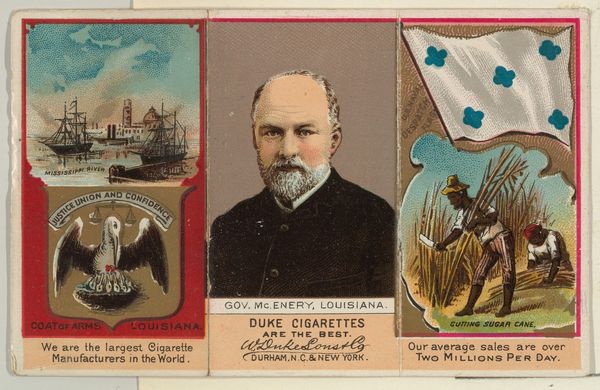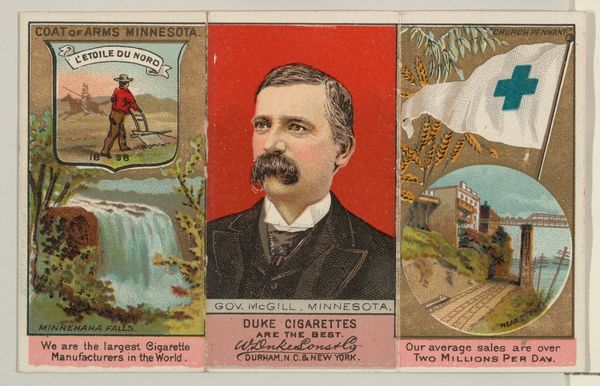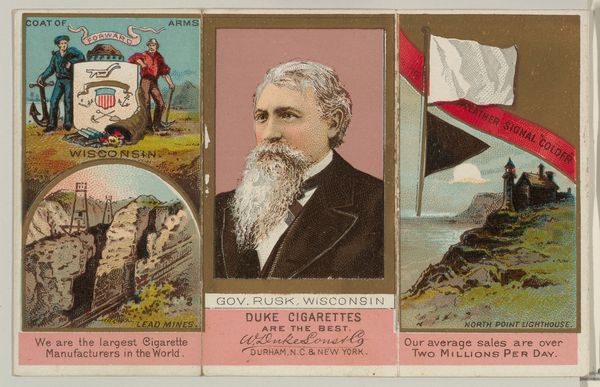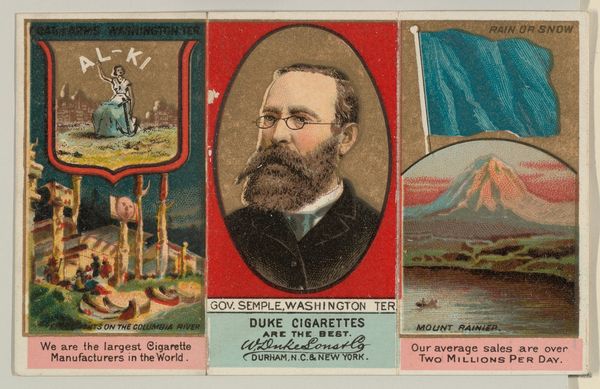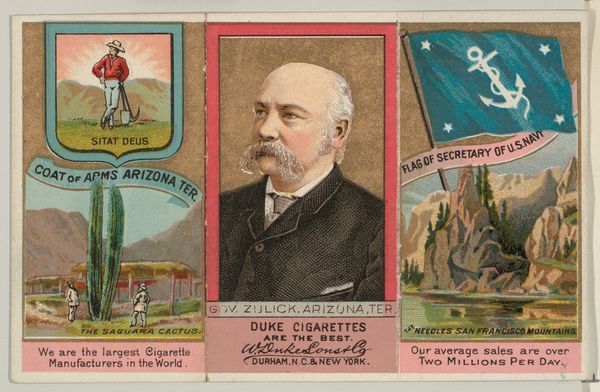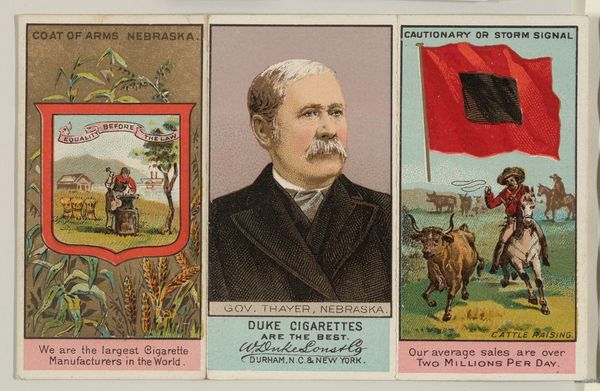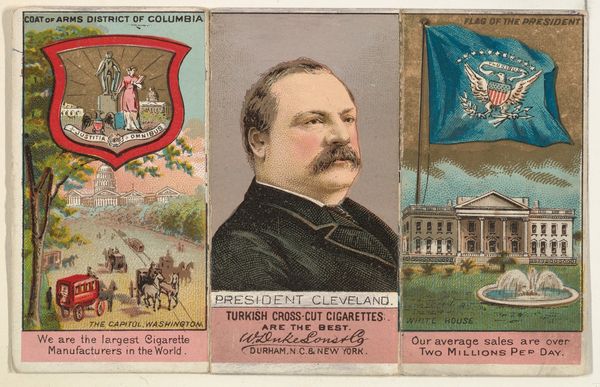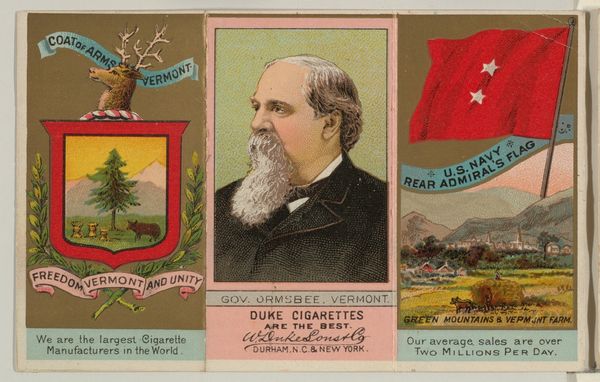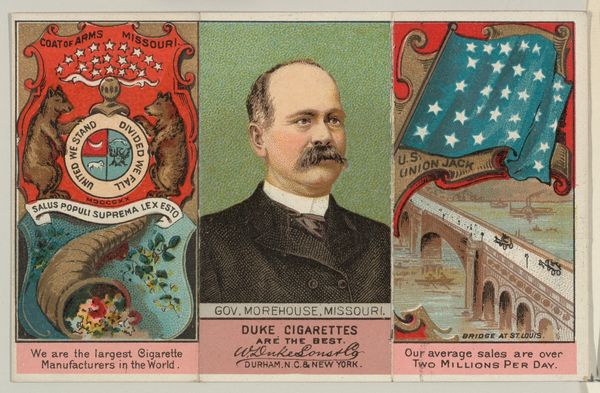
Governor Ross, Texas, from "Governors, Arms, Etc." series (N133-2), issued by Duke Sons & Co. 1885 - 1892
0:00
0:00
drawing, lithograph, print, paper
#
portrait
#
drawing
#
animal
#
lithograph
# print
#
figuration
#
paper
#
genre-painting
#
history-painting
Dimensions: Sheet (unfolded): 2 3/4 × 4 5/16 in. (7 × 11 cm) Sheet (folded): 2 3/4 × 1 3/8 in. (7 × 3.5 cm)
Copyright: Public Domain
Curator: Looking at "Governor Ross, Texas," a lithograph print produced between 1885 and 1892 by W. Duke, Sons & Co., I am immediately drawn to how seamlessly it combines the visual language of portraiture with commercial advertising. Editor: My initial reaction is how the bright colours clash oddly. The juxtaposition of the governor's formal portrait, the coat of arms, and the cattle drive scene feels…jarring, as if it's fighting for my attention. And "TWO MILLIONS PER DAY." Ugh, how capitalism can trivialize everything by using these images to push products! Curator: Exactly! The lithographic process allowed for mass production on paper. These cards were included in cigarette packs. The value lies not so much in artistry but how printing technologies facilitated a kind of proto-marketing of both a political figure, Texas, and Duke's cigarettes to a vast consumer base. Editor: Yes, the print's design choices offer interesting entry points when understanding American history. The cattle represent Texas’ agricultural roots and the governor's image legitimizes him as an agent protecting the cattle industry from Native or Mexican ownership. That must have really resonated then! Curator: Note the materials though – cheap paper, mass-produced inks – meant to be ephemeral, discarded. Yet, we now examine them. It underscores how what's considered ‘disposable’ reveals a lot about social and economic values. This wasn’t meant to be "art" in the high-art sense, but an advertisement using printing technologies and images to create an imagined lifestyle and brand recognition for a political actor, a geographic region, and Duke’s cigarettes. Editor: Precisely. It highlights the era's commodification of identity, history and place. The image isn’t simply documenting Governor Ross; it’s selling an aspirational vision of Texas, intertwined with a promise of quality, as Duke boasts "are the best." Also this type of aggressive self-promotion reinforces a pattern of market dominance for the producer. Curator: And by seeing what images they reproduced for such purposes, we learn how they crafted their brand with prevailing ideas about class and taste that ultimately helped to normalize tobacco use. Editor: Well, I see this image as an important critical artifact for understanding how deeply power, products, and place were aggressively sold by late 19th century industrial capitalism. Curator: Right, seeing the historical implications through such material things reminds us how ubiquitous printing processes helped to shape our realities.
Comments
No comments
Be the first to comment and join the conversation on the ultimate creative platform.

